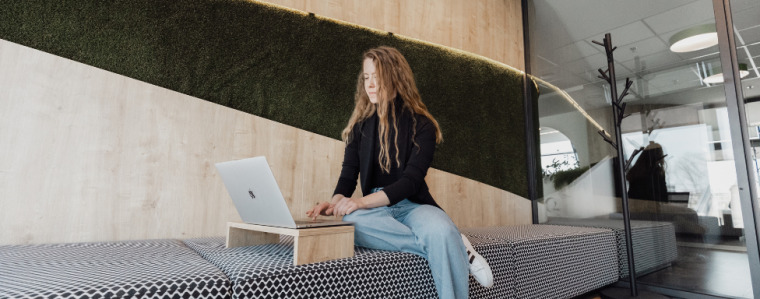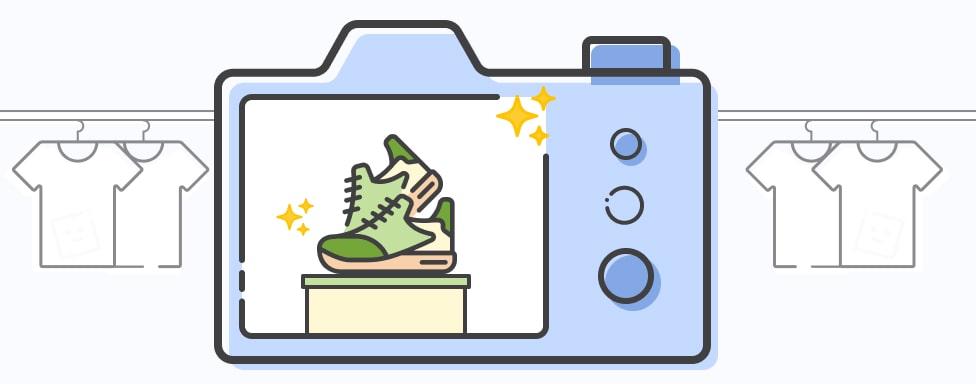Humans are visual beings, and we process information based on what we see. Studies show that people remember 80% of what they see and 20% of what they read.
Therefore, high-quality product images are a cornerstone of a successful online retail strategy, influencing customer perceptions, engagement, and sales. Let’s delve into why product photography is crucial for eCommerce success and how it can be effectively leveraged to boost your online business.
The Visual Nature of Online Shopping
Unlike traditional brick-and-mortar stores, eCommerce platforms lack the tactile experience. Customers cannot touch, feel, or try out products before purchasing. Therefore, they rely heavily on visual cues to make informed buying decisions. High-quality images bridge this sensory gap by providing detailed, accurate, and appealing representations of products.
Building Trust and Credibility
Trust is a critical factor in online shopping. When customers cannot physically inspect a product, they need to trust that what they see is what they will get. Professional product photography builds this trust by showcasing products in their best light, highlighting their features, quality, and craftsmanship. Clear, high-resolution images reduce uncertainty and assure customers of the product’s authenticity and value.
Enhancing Perceived Product Value
Quality product images can significantly enhance the perceived value of your merchandise. Just as well-designed packaging can make a product seem more luxurious in a physical store, high-quality images can elevate the perceived quality of a product online. Professional photography can highlight textures, colors, and fine details, making products look more appealing and desirable.
Improving Conversion Rates
Effective product photography directly impacts conversion rates. According to various studies, products with high-quality images are more likely to be added to a shopping cart and purchased. Detailed images that show the product from multiple angles and in different contexts help customers feel confident in their purchase decision, reducing cart abandonment rates and increasing sales.
Did You Know That Product Photography Can Contribute to Your SEO?
Product images also significantly affect search engine optimization (SEO). Well-optimized images with appropriate alt text can enhance your website’s visibility on search engines. Image searches are becoming increasingly popular; having your products appear in image search results can drive more traffic to your site.
There are a few ways to do it:
- Name your image file. Image titles like ”image01.jpg” don’t help Google or consumers. When naming photos, use words that describe the image clearly. Avoid making too long file names and stuffing them with keywords because they could have a negative impact on your ranking.
- Alt text on images. Search engines have a hard time interpreting images. They depend mostly on file (images) names and the alternative text. The purpose of the alt text is to describe images to Google or other search engines so they can understand them.
- Image size and types. JPEG is the most frequently used file type for e-commerce stores because it allows high-quality photo previews with a smaller file size. As previously mentioned, the smaller image file size can play a role in increasing the load speed. Significant page load times can decrease your ranking and can mean lost sales.

Social Media Is All About Photography
In the age of social media, visually appealing content is key to engaging audiences. High-quality product photos are essential for creating compelling social media posts, advertisements, and marketing campaigns.
Imagine scrolling through your feed. What catches your eye? It’s those high-quality product shots, right? They’re the ones that make you pause, double-tap, or share to a friend.
But it’s not just about likes and shares. As mentioned earlier in this post, consistent and professional imagery builds trust. When your audience sees polished photos, they see a brand that cares about quality and attention to detail. It’s a subtle yet powerful message that resonates with potential customers.
And let’s not forget about storytelling. Your product photos aren’t just visuals; each image is an opportunity to showcase your brand’s personality, values, and unique offerings. It’s your chance to connect with your audience.
Best Practices for eCommerce Product Photography
To maximize the impact of product photography on your eCommerce success, consider the following best practices:
- Invest in a good photography service and even better photos: Invest in a skilled photographer with access to high-quality cameras, lighting equipment, and backdrops to capture your products. But, great product photos don’t mean anything if they take too much time to load. In that case, your bounce rate would be off the charts. Be careful about image size, if a customer has to wait for more than 2 seconds to load a photo you will lose your game.
- Consistency is Key: Maintain a consistent style and quality across all product images to create a cohesive brand image. Plan in detail what every set of photos should look like, from the background to the lighting, editing, and the creation of a unique template. Every product should be photographed in the same way and conditions. When all product photos are similar, customers can easily scan through your pages and pick the product they want.
- Show Multiple Angles: Provide images from various angles and close-ups to give customers a comprehensive view of the product. The more visual information a potential customer has, the more willing he or she is to buy it. Google recommends that back views and close-ups can be used for additional images but not the main image. Also, the product should take no less than 75% but not more than 90% of the full image.
- Contextual Shots: Include lifestyle images that show the product in use, helping customers visualize how it fits into their lives. In fact, according to Weebly research, 22% of online product returns are because the ordered items look different than in the photos. In order to solve that problem, you can show your products in lifestyle photography so that anyone can find one that meets their needs.
- Attention to Detail: Ensure images are well-lit, focused, and free of distractions or clutter. Your product should be in focus. Try not to put too many visual elements in one photo, just one main, which is your product. The background should be solid, white, gray, or light-colored.
- Post-Processing: Use editing software to enhance images, correct colors, and remove imperfections. You should brighten the background and remove any shadows, but don’t edit the photos too much. Products have to look the same as they are in reality.
How We Practiced What We Preach – Lera Sport
Lera Sport is a Croatian merchant that represents, sells, distributes, and services sports equipment. They are an authorized representative in Croatia for several world-famous sports brands, including Fischer, Deuter, Capriolo, Adria, Olympia, Frera, Smith Optics, and many more. Given their association with high-quality brands, we had to use imagery that reflects this standard.
To support the premium quality of their brands, we employed a mixture of product and lifestyle photography. This approach showcases the intricate details and craftsmanship of the sports equipment and illustrates how these products can be integrated into customers’ lives.
By combining detailed product shots with dynamic lifestyle images, we achieved a dual effect: customers gain a clear understanding of the product’s features and can also envision themselves using the product in real-life scenarios. This strategy effectively enhances the perceived value of the products, builds trust, and increases customer engagement and conversion rates.


How Can Your eCommerce Business Leverage Product Photography?
By investing in professional product photography and following UX/UI best practices, you can create a visually appealing and trustworthy online shopping experience that drives success. If you need help, we’re here to assist you in improving customer engagement, thus increasing sales and revenue.
And hey, if a picture is worth a thousand words, imagine how much your product photos are saying.



